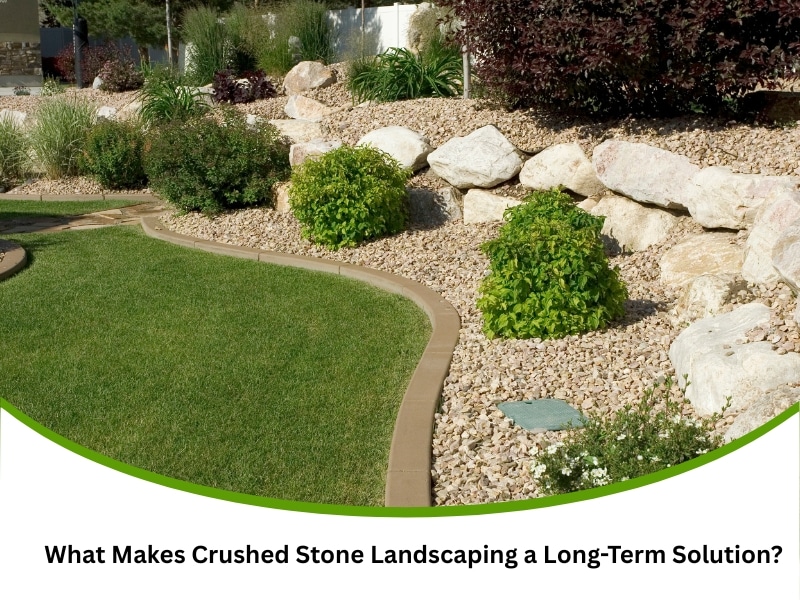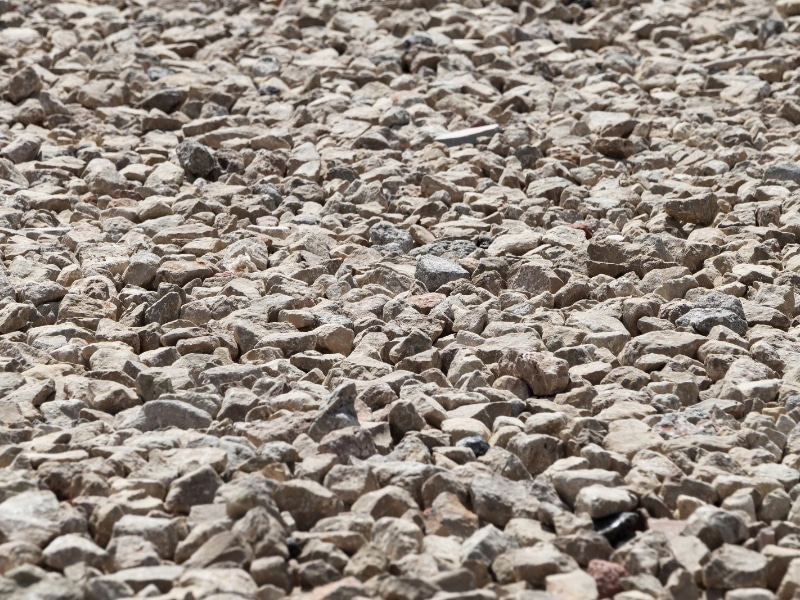Choosing the right surface for your garden can significantly impact its longevity. While many traditional options look the part, they often fall short under pressure. Crushed stone landscaping offers a durable and low-maintenance solution that withstands Australia’s unpredictable weather with ease. It’s not just a pretty face—it tackles drainage, erosion, and upkeep without fuss. Whether you’re designing a sleek courtyard or a bush-style garden, crushed stone delivers durability and style. This blog explores why it outperforms common materials, the real cost of poor drainage, and how to make your landscape work smarter—not harder—for years to come.
What issues do traditional garden surfaces have?
Standard mulch, timber chips, and even concrete may seem straightforward, but they each come with significant downsides. Most can’t handle extreme weather shifts, and many create maintenance headaches that cost time and money.
- Organic mulch breaks down quickly, attracts pests such as termites and ants, and requires regular topping up, especially after storms.
- Pavers often shift over time, particularly if the sub-base is poorly prepared, which can cause trip hazards or messy joints.
- Turf demands constant watering, mowing, and fertilising, becoming a time and water drain during dry seasons.
- Timber edging and decking may rot, warp, or splinter if not adequately treated or frequently exposed to water.
Over time, these issues accumulate. What starts as a budget-friendly solution often ends up requiring frequent replacements or costly repairs. Worse still, poor water management caused by traditional surfaces can damage your garden structure beneath.
How can poor drainage lead to costly plant damage?
Poor drainage doesn’t just make your yard soggy—it can kill plants, attract mosquitoes, and cause soil movement. Even small puddles can suffocate roots and turn garden beds into swampy messes.
- Standing water encourages root rot and fungal disease, which spreads quickly through garden beds.
- Saturated soil becomes compacted, reducing oxygen flow and stressing plant systems.
- Overflow from hard surfaces, such as concrete, can displace mulch or topsoil, stripping nutrients from key areas.
This hidden issue can be a slow burn. Many homeowners only realise there’s a problem when plants start dying or soil shifts begin to affect retaining walls. It’s worth taking the time to learn proper base preparation for outdoor stone beds before the damage escalates.
Why is choosing the right crushed stone landscaping crucial?
Crushed stone comes in various shapes, sizes, and colours—and not all are created equal. Choosing the right type matters for both appearance and performance.
- Fine stones, such as decomposed granite, are ideal for paths and patios, offering a smooth finish and a compact hold.
- Larger, angular stones allow for better drainage in garden beds, creating air pockets that reduce waterlogging.
- Colour variations—from white to red to deep charcoal—offer creative flexibility, letting you match the vibe of your home and surroundings.
Making the proper selection ensures your stone not only looks good but also works hard year-round. For example, a premium crushed stone landscaping option for yards can increase water permeability, resist weed growth, and maintain a crisp finish in high-traffic areas. If you’re unsure where to start, you can find quality solutions for effective crushed stone landscaping that balance function and style without overcomplicating the process.
How does crushed stone landscaping improve drainage and prevent erosion?
Crushed stone is a smart solution for managing water flow in your yard. Its porous structure allows rainfall to seep through rather than pool on the surface.
- Prevents runoff by dispersing water evenly into the soil, helping avoid erosion near foundations or fences.
- Holds soil in place on sloped blocks and garden edges, acting as a natural anchor.
- Reduces splashback onto buildings or timber posts, protecting structures from water damage.
By using the right depth and base layer, you’ll also reduce erosion and structural wear over time. It’s especially effective on hillsides or areas exposed to heavy rains. Crushed stone works best when paired with sustainable landscaping practices to ensure long-term garden health, ensuring both your design and soil structure remain intact over the years.
What design versatility does crushed stone landscaping allow?
This is where crushed stone truly shines. Beyond function, it’s a dream for creating custom looks with minimal effort. Whether you’re going rustic or modern, it fits in without fuss.
- Combine with pavers or timber borders for contrast, creating depth and clean transitions between zones.
- Use coloured stones to highlight feature areas, like around fire pits or garden sculptures.
- Shape it into paths, garden rings, or dry creek beds with ease, offering flexibility that rigid materials can’t match.
Unlike poured concrete or fixed tiles, stone lets you adjust your layout over time. You can refresh patterns, swap sections, or blend new colours without starting from scratch. That makes it an effective crushed landscape stone pathway design for both long-term use and short-term makeovers.
Here’s how various stone types compare:
| Stone Type | Best Use | Colour Options | Maintenance Level |
| Decomposed granite | Paths, patios | Earthy tones | Low |
| Crushed basalt | Modern garden accents | Charcoal, black | Low |
| River pebbles | Garden beds, water features | Mixed natural | Medium |
| Crushed limestone | Driveways, base layers | Light beige, grey | Low |
How can crushed stone landscaping be maintained over time?
While crushed stone is low-maintenance, a few simple steps can help keep it looking fresh. You’ll want to keep the surface clean, edges tidy, and base layers intact.
- Use a leaf blower or rake to remove debris, especially after storms or windy days.
- Top up areas that lose volume after heavy rain, using matching stone to maintain a uniform look.
- Add fresh stone every few years to keep the colour sharp, especially in high-traffic walkways or driveways.
One of the biggest perks is that, unlike mulch, stone doesn’t rot, fade quickly, or compress into useless sludge. It’s a wise choice for anyone who values function as much as form. If you’re aiming to reduce maintenance, the long-term benefits of maintaining crushed stone landscaping speak for themselves. It also helps to understand ways to ensure your landscape thrives throughout all seasons, so your stone surfaces work in harmony with plant health and climate changes.
Final thoughts
There’s no sugar-coating it—crushed stone landscaping is both practical and attractive. It’s the kind of choice that pays off in spades by protecting your plants, holding up under pressure, and adding visual punch to your yard.
Whether you’re redesigning a whole garden or just improving that worn-out path, the right stone can make all the difference. If you’re unsure where to begin, you can find out how A1 Gardening & Landscaping Sydney brings gardens to life.


